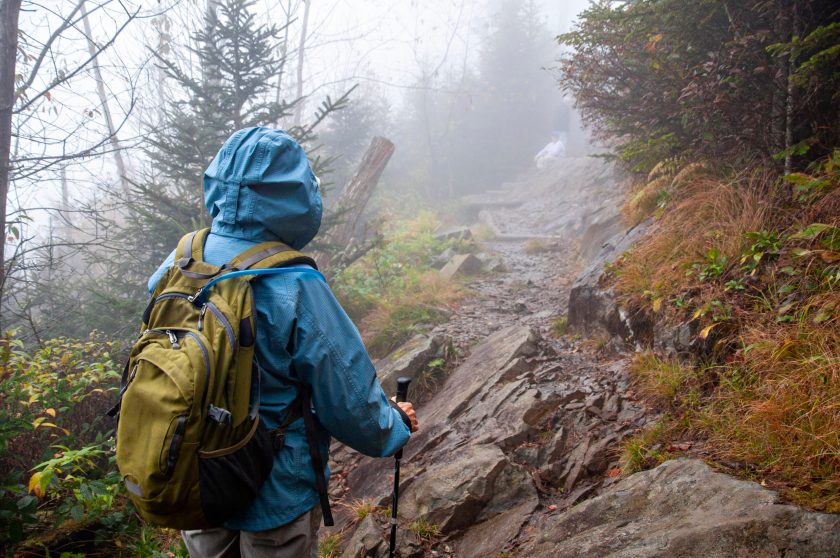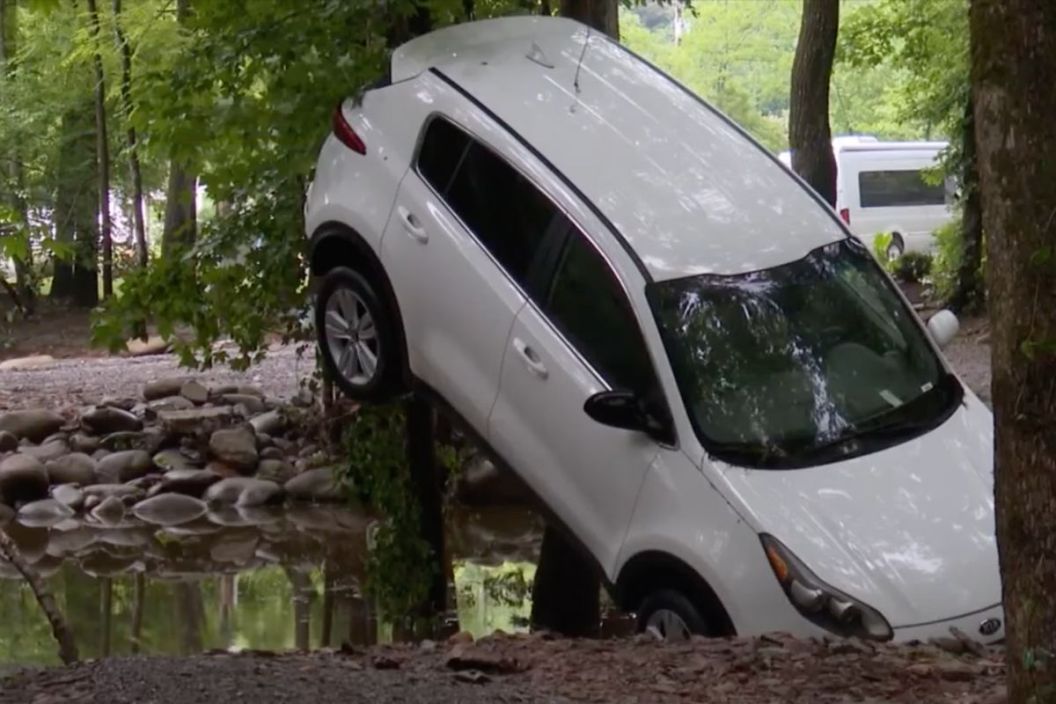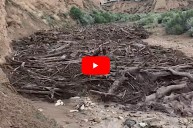Just a short month after historic floods indelibly damaged Yellowstone National Park in one part of the U.S., Great Smoky Mountains National Park has also been shut down in specific areas because of flash floods. Officials announced Wednesday, July 13, that roads, trails, and facilities in the Greenbrier area of the park are shut down because of the floods caused by the increasing rainfall that preceded the storm that hit Tuesday. The heavy rain substantially damaged vehicles that were parked at Greenbrier Campground, even washing an SUV into a creek and crashing it against a tree.
The Great Smoky Mountains line the border between North Carolina and Tennessee. But the closure affects only the Greenbrier area in Gatlinburg, Tennessee, including the Greenbrier Picnic Area, Greenbrier Picnic Pavilion, Ramsey Cascades Trail, Porters Creek Trail, and Backcountry Campsites 31, 32, and 33. Although hiking trails such as Old Settlers, Brushy Mountain, and Grapeyard Ridge Trails are still open, they cannot be accessed from the Greenbrier Area. Culvert damage and washouts along Porters Creek Road and Ramsey Cascades Trail are still being assessed.
The National Weather Service Doppler radar reported that the Porters Gap received an estimated 8.72 inches of rain within a few hours, and the park received five inches of rain over the week. The heavy rainfall led to saturated soils before Tuesday's storm, which resulted in flash floods along the Middle Prong of the Little Pigeon River. Deputy Superintendent Alan Sumeriski told WYFF 4 that emergency responders from the park along with Gatlinburg Fire and Rescue saved a 13-year-old boy from rising flood waters in the Chimney Tops Picnic Area, and rescue crews reported that waters rose as high as the picnic tables.
He also gave a reminder about the importance of preparing for bad weather, saying, "We remind everyone to be mindful of weather forecasts and to be prepared with an emergency plan before heading out into the backcountry as these popup storms can cause the rivers to rise rapidly...Please exercise caution when recreating near or attempting to cross rivers in the park."
Although only the Greenbrier area is closed, that doesn't mean future visitors shouldn't be wary of how the flooding may affect the rest of the park. Rabbit Creek Trail has a wide bridge crossing Abrams Creek that is completely submerged during high water events, and the recent flash floods have taken this bridge out. The Caldwell Fork Trail has several crossings where water levels have risen, and hikers will need to be prepared to cross them. Officials have also recommended that visitors not engage in any water recreation. Those who choose to swim, tube, kayak, or canoe in park waters will risk facing hazards caused by the wavering water levels and should wear proper personal protective equipment such as closed-toed shoes, life jackets, and helmets.
Officials and rangers can only give so many warnings, and they can't account for everything the floods may affect in the park. But before you visit any natural area where cell service is possibly limited, there are precautions you should always take before your trip.
How to Prepare for Bad Weather Forecasts

Sodabelly via Getty Images
Familiarize Yourself with the Area
This might seem like a given before any trip, but looking at a park's website will tell you more than just general information about the area. Those websites are the first to have information on active alerts, closures, and warnings, and you'll know what specific places in the park have been affected by dangerous conditions. You'll also learn which locations are high-risk for weather hazards, such as mountain peaks or plateaus that are the most prone to lightning strikes. When you get to the park, talk to a ranger or official about where the safest places to take shelter are and what kind of warning systems they have to notify visitors. The National Park Service recommends going indoors as bad weather approaches, but also explains that "Sheds, storage facilities, porches, pavilions/picnic shelters, and rain shelters are NOT safe locations during severe weather." Cars can serve as shelters if you can't make it to a building except during tornadoes, floods, and hurricanes.
Also, consider seasonality. Do some research on a park's seasonal temperatures, precipitation levels, and common weather conditions, and when severe weather risks are high. This will help you decide when to to start your adventure.
Always Check the Weather Forecast
Learn the NPS's severe weather terms, and then check the local weather forecast before you leave for your trip and again when you arrive. Weather conditions can easily change at any given time, so it's always good practice to be consistently checking in. Turn your cell phone's weather notifications on so that you can get severe weather and emergency alerts. NPS also suggests that the NOAA Weather Radio as a great resource to tune into. They provide the most recent weather conditions, even for remote areas that might not have cell service.
Be Ready to Adapt
Be ready to adjust your trip's plans, and have a back-up plan in case of emergencies. Consider your departure and arrival times and how long and far you'll be traveling so that you can adjust accordingly when it's called for. Even if you accommodate your itinerary to avoid severe weather conditions, you still might not be able to anticipate what could happen. If dangerous weather conditions don't completely deter you from exploring a national park during a certain time, know how to get to shelters from wherever you'll be should they hit. If you start seeing signs that the weather is going to get bad, keep in mind that it's better to be safe than sorry. If you know you're in a dangerous spot for severe weather conditions, make the preliminary decision to head back to safer areas.
It's important to know that there will be new hazards to face even after severe weather. Conditions can alter terrains and landscapes, so even if you postpone your trip for a later date, you should be wary of slippery rocks and fallen trees. You should also avoid fallen power lines, flood damage, mudslides, rockslides, and washed-out roads, as those places are still dangerous even after bad weather has passed.
Be Prepared
Make sure you have the proper supplies in case of emergencies, may it be bad weather or something else. First-aid kits, extra food and water, and proper clothing will go a long way if you find yourself trapped at a location because of the weather. Personal locator beacons are good investments, especially since cell service will most likely not be reliable. Having physical maps can also help you if you lose phone battery and can't use any apps to help you navigate the area. It's also important to let someone know where you'll be and what your itinerary plans are. Set up check-in times with them, so that if they don't hear from you, they can find a way to send help.




